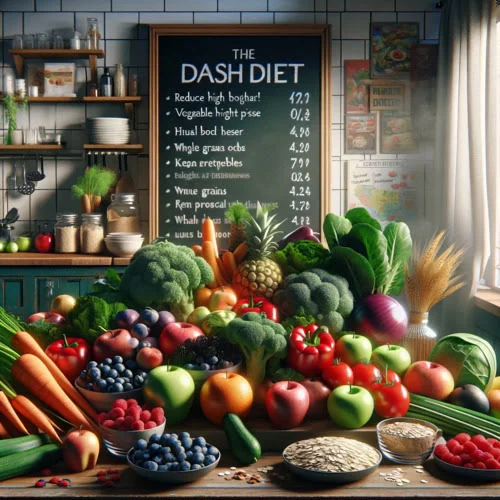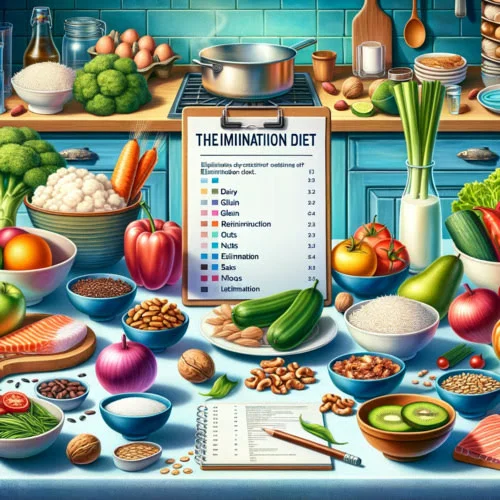Complete Guide to Weight Loss
In today’s world, there are many methods for weight loss, and one of them is the atomic diet. This approach to nutrition attracts attention due to its unique principles and promises of long-term results. In this article, we will explore how the atomic diet works, what benefits it can offer, and share reviews from those who have already tried this method.
| Pros of the Atomic Diet | Cons of the Atomic Diet |
|---|---|
| Effective weight loss | May require careful planning |
| Improved overall health | May be difficult to comply with in the long term |
| Diet variety | Not suitable for everyone (especially people with certain medical conditions) |
| Reduced hunger | May cause nutritional deficiencies if not followed correctly |
| Stable and long-term results | Calorie and portion control required |
| No harm to the body | Possible difficulties with adaptation at the beginning of the diet |
| Suitable for different people | Possible individual side effects (headaches, weakness) |
| Digestive Support | Requires time to prepare and cook dishes |
General Description of the Diet
The atomic diet is based on the principles of alternating protein and carbohydrate days, which helps the body effectively burn fat and maintain muscle mass. The sample menu of this diet includes a variety of dietary dishes that provide necessary nutrients and support digestion. As a result, weight loss occurs gradually, without sudden jumps, reducing stress on the body.
Origin of the Name and Methodology
The name “atomic diet” originated from the metaphor of an explosion, symbolizing rapid and noticeable results when following the diet rules. The methodology combines scientific research in the field of nutrition and real reviews of the diet, making it attractive to those seeking long-term results.
Basic Principles of the Atomic Diet
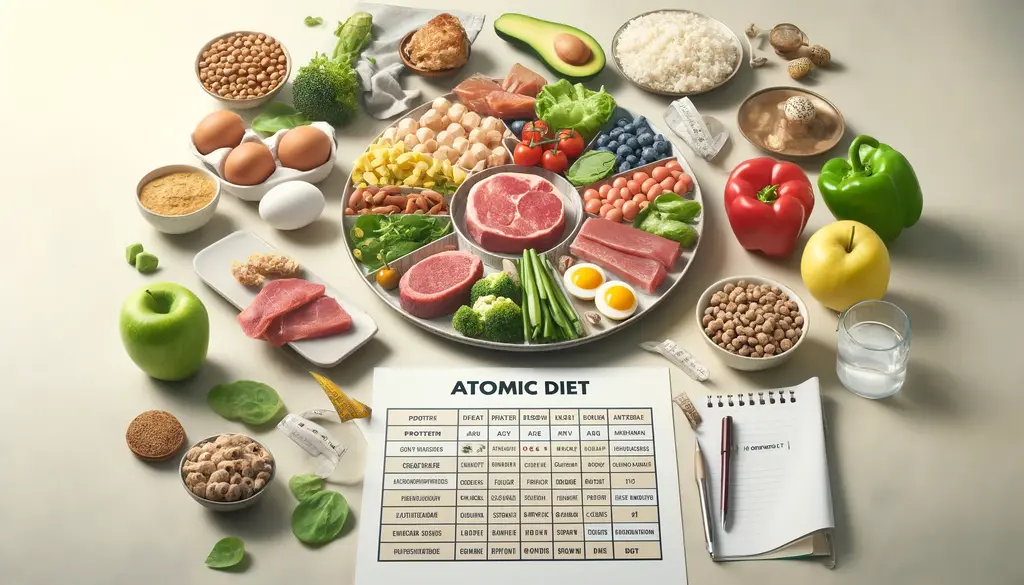
The basic principles of the atomic diet include alternating protein and carbohydrate days, which help the body adapt and efficiently use nutrients. This approach not only promotes weight loss but also improves overall health. The key point is the proper distribution of calories and adherence to a sample menu that includes dietary dishes that support digestion and provide the body with necessary elements.
Protein-Carbohydrate Alternation
Protein-carbohydrate alternation is the central element of the atomic diet. On protein days, the focus is on consuming foods rich in proteins, such as meat, fish, eggs, and dairy products. On carbohydrate days, the preference is given to complex carbohydrates, such as vegetables, fruits, whole grain products, and legumes. This method helps maintain high energy levels and activates metabolism, contributing to effective weight loss.
Caloric Recommendations
When following the atomic diet, it is recommended to maintain daily caloric intake at up to 1200 kcal per day. This helps create a calorie deficit necessary for weight loss. However, with increased physical activity, the number of calories can be increased to provide the body with enough energy and avoid fatigue. It is important to consider individual needs and consult with a dietitian to achieve optimal results.
Examples of Dishes for Protein and Carbohydrate Days
On protein days, you can prepare dishes such as baked chicken breast with vegetables, an omelet with greens, steamed fish with broccoli. On carbohydrate days, the menu may include vegetable salads, stewed legumes with greens, fruits, and whole grain cereals. Variety in nutrition helps avoid monotony and provides the body with all necessary nutrients.
Advantages and Disadvantages
The atomic diet has its pros and cons, which are important to consider before starting it. Among the advantages are effective weight loss, improved metabolism, and variety in nutrition. However, there are also disadvantages, such as potential risks for digestion and stress on the body due to abrupt changes in the diet. It is important to monitor the body’s response and adjust the diet as necessary.
Effectiveness for Weight Loss
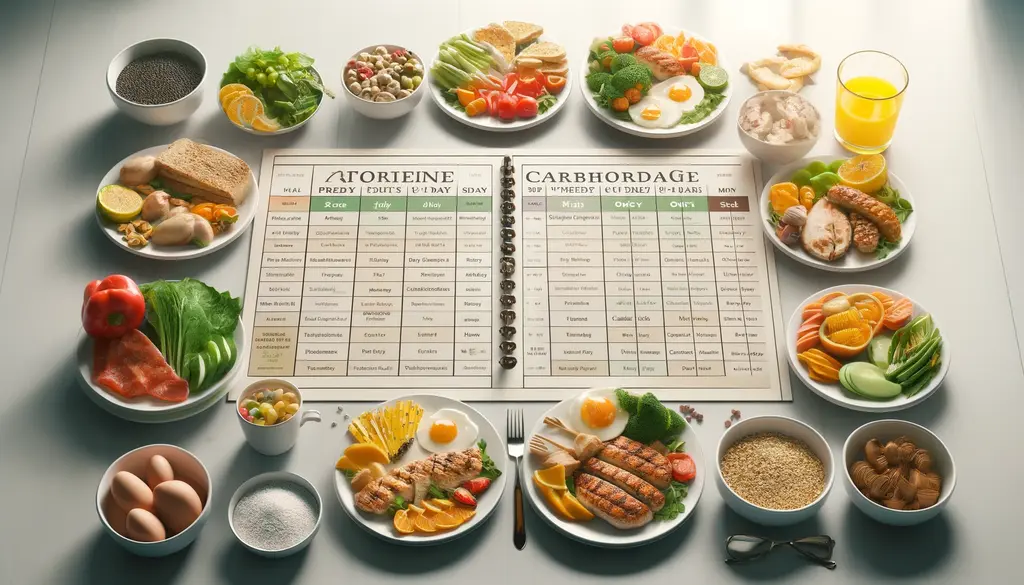
The effectiveness of the atomic diet for weight loss is confirmed by many reviews. Thanks to protein-carbohydrate alternation, the body receives all necessary nutrients, and gradual fat burning occurs. The sample menu, including dietary dishes, helps maintain motivation and avoid breakdowns. It is important to follow caloric recommendations and consider individual characteristics to achieve the best results.
Possible Risks for Digestion and Body Stress
Like any other diet, the atomic diet may pose certain risks for digestion and cause stress on the body. Abrupt changes in the diet can lead to discomfort, bloating, and other digestive issues. Additionally, low caloric intake can be stressful for the body, especially with high physical activity. It is recommended to start the diet gradually and monitor health conditions, consulting with a doctor if necessary.
Long-term Maintenance of Results
One of the key advantages of the atomic diet is the possibility of long-term maintenance of results. Proper alternation of protein and carbohydrate days helps maintain the achieved weight and prevents the yo-yo effect. Regular inclusion of dietary dishes in the diet and maintaining optimal caloric levels contribute to stability and improvement in overall health. It is important to continue following the principles of healthy eating even after reaching the desired weight.
Exiting the Diet
Properly exiting the atomic diet is just as important as following it. Gradual return to regular eating will help avoid stress for the body and maintain achieved results.
How to Properly Conclude the Diet
1. Gradual increase in caloric intake: Increase daily caloric intake by 100-200 kcal per week so the body can adapt to new conditions.
2. Balanced nutrition: Include foods from all food groups: proteins, carbohydrates, and fats. Continue monitoring food quality, preferring natural and minimally processed products.
3. Maintain alternation: Gradually reduce the frequency of protein-carbohydrate alternation, adding more mixed days until you return to regular eating.
4. Hydration and vitamins: Continue drinking enough water and taking vitamins and minerals to support health.
Recommendations for Maintaining Weight After the Diet
1. Portion control: Monitor portion sizes carefully to avoid overeating. Use small plates and try to eat slowly.
2. Regular physical activity: Maintain an active lifestyle, engage in sports, or just go for walks. Regular physical activity will help maintain a high metabolism.
3. Meal planning: Plan your weekly menu to avoid impulsive snacking and maintain a balanced diet. Include your favorite dietary dishes from the atomic diet.
4. Mindful eating: Listen to your body, eat when you feel hungry, and stop when you are full. Avoid emotional overeating, find other ways to cope with stress.
5. Regular weigh-ins: Periodically check your weight to monitor changes and adjust your diet and physical activity as necessary.
By following these recommendations, you will be able to successfully conclude the atomic diet and maintain achieved results in the long term, keeping your health and well-being.
Conclusion
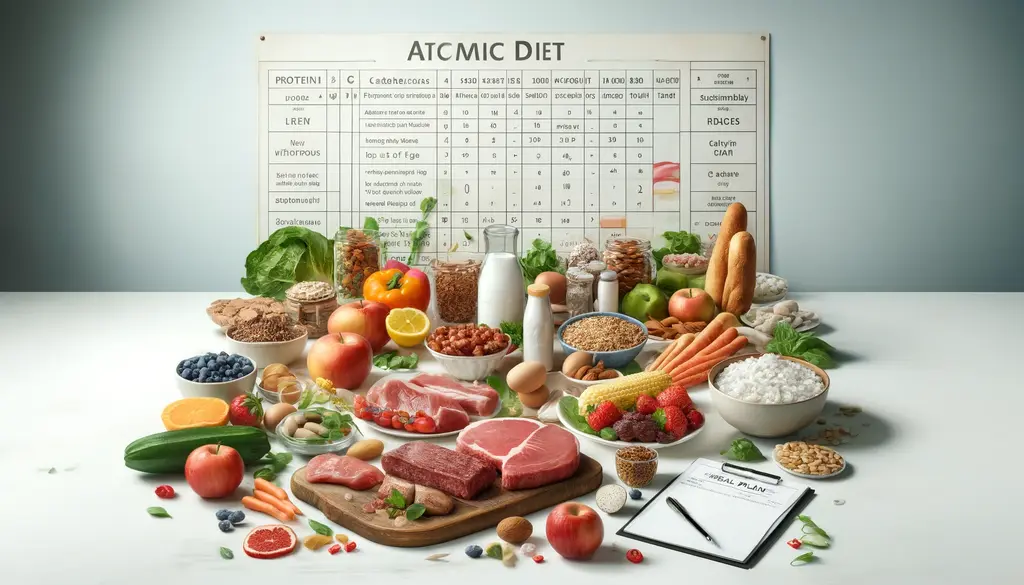
The atomic diet is an effective method for weight loss based on the principles of alternating protein and carbohydrate days. This approach helps achieve stable and long-term results without harming the body. It is important to follow the basic rules of the diet, monitor calorie intake and diet variety, and consider individual body characteristics.
General Tips and Recommendations for the Diet
1. Consult with a doctor: Before starting any diet, including the atomic diet, it is recommended to consult with a doctor or dietitian. This will help avoid potential risks and choose the optimal nutrition plan.
2. Planning and preparation: Plan your weekly menu and prepare necessary products in advance. This will help avoid breakdowns and ensure variety in your diet.
3. Alternating protein and carbohydrate days: Strictly follow the alternation schedule for maximum effectiveness. On protein days, focus on meat, fish, eggs, and dairy products, and on carbohydrate days – on vegetables, fruits, and whole grain products.
4. Maintain water balance: Drink enough water every day to maintain normal body functions and support digestion.
5. Moderate physical activity: Include regular physical exercises in your daily routine. This will help speed up metabolism and maintain achieved weight.
6. Pay attention to body signals: Listen to your body, pay attention to signs of hunger and fullness. This will help avoid overeating and maintain balance.
7. Gradual exit from the diet: Conclude the diet gradually, increasing caloric intake and adding variety to your diet. This will allow the body to adapt and maintain achieved results.
8. Maintaining long-term results: Monitor your diet and physical activity after concluding the diet. Include healthy foods in your diet, continue exercising, and control your weight.
By following these recommendations, you will be able to successfully follow the atomic diet and maintain achieved results. It is important to remember that a healthy lifestyle and balanced nutrition are key factors for maintaining health and well-being.
FAQ
The Atomic Diet is based on alternating protein and carbohydrate days, which helps effectively burn fat while maintaining muscle mass. This approach keeps your metabolism high and provides the body with all the nutrients it needs.
A sample menu includes breakfast, lunch, dinner and snacks for protein and carbohydrate days. For example, on a protein day, you can eat an omelet with greens for breakfast, baked chicken breast with broccoli for lunch, and stewed beef with mushrooms for dinner. On a carbohydrate day, breakfast may consist of oatmeal with berries, lunch of quinoa salad with vegetables, and dinner of stewed legumes with herbs.
The Atomic Diet promotes gradual and sustainable weight loss, improves metabolism and maintains high energy levels. It also offers variety in your diet, making it easier to follow in the long run.
Risks include possible digestive problems and stress on the body due to sudden changes in diet. A low calorie diet can be stressful for the body, especially with high physical activity. It is important to closely monitor your health and consult a doctor if necessary.
Exit from the diet should be gradual. Increase your daily calorie intake by 100-200 kcal per week, returning to a balanced diet. Keep your portions moderate, continue to exercise, and monitor your body’s response.
After completing the diet, it is recommended to control portions, plan meals, maintain physical activity and check your weight regularly. Conscious eating and paying attention to your body’s signals will also help you avoid overeating and maintain your results.
Alternating protein and carbohydrate days helps maintain a high metabolism, provides the body with all the necessary nutrients and promotes effective weight loss without losing muscle mass.




